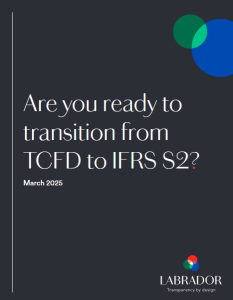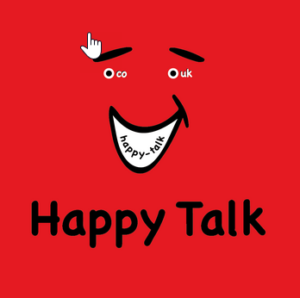As part of our blog series based on this great panel of in-house practitioners (here’s the latest in the series) – featuring Leidos’ Henrique Canarim, Etsy’s Jennifer Card and Intel’s Alex Shukhman – here’s a blog that addresses the question of: “How much do you think about design when you draft? Do you rely on others more for that type of thing?”
- Intel’s Alex Shukhman – Having been in the industry for a while, I find there is a spectrum of drafters who have different philosophies on design and how much they’re willing to spend time on it. And how much they care about it to be frank. In my experience, there’s some people who are really not wired that way which is okay.
Disclosure has come a long way from being simply what is regulatorily required to become a marketing piece. And the reason why it’s so critical that you at least be mindful of – and try to kind of reflect on how you want to design stuff – is there are hundreds of these professionals who have to read, evaluate and use your disclosure to make their voting and investment decisions and to make them quickly and easily. You have to help them in terms of making it easier for them to identify the key information so that they get it right and make the best decision that they can. Hopefully, in a way that’s most favorable to you.
I’ve worked in both a resource constrained situation, where in my previous place we didn’t have all kinds of designer-oriented people that help me out here at Intel. There are pluses and minuses to being at each type of company.
If you’re in a resource-constrained environment, you have to be the Swiss army knife and that can be a challenge if you don’t have the time to do everything you want to be doing. On the other hand, in that environment, you do have autonomy and you have the ability to efficiently effectuate change.
In comparison, if you’re at a larger place you may have all kinds of resources. You may have outside advisers with a lot of experience and good ideas. You may have other people who may help but then it may start becoming more challenging because you’ve now got a lot more bureaucracy, many more individuals involved, where you’re having to align and make sure that they all agree on how you’re going to approach this stuff.
Some people may care and some people may not. Design is a critical thing and the more time I have spent on the subject, the more I realize it can very useful. We try to utilize concepts like “what do you do with your formatting?” to draw readers to keywords or statements that you want highlighted. “How do you use headings by making them punchier so that you can effectively get the essence of what the next paragraph is going to tell you from just reading the headline?” Pulling out key data into “call out” boxes or placing them into certain places that is more visible.
A couple of years ago, we did a statement of opposition where basically if you just read our captions you literally got everything you needed. We included call out boxes on all the key stats and I doubt many people read at page 140 – or whatever page it is – the numerous tiny details about that sort of thing. That level of thought around design can be very helpful and useful if you weave it all the way through. - Etsy’s Jennifer Card – I think design is really critical. I’ll echo the point that increasingly SEC filings are not just compliance documents but they’re investor-facing communications. They’re intended to present a clear and compelling picture about a company and its mission and its business initiatives.
The filings help to inform voting and investment decisions so you want to have your disclosure be accurate and compliant of course – but also readable, transparent, and understandable. Design can help with that. I tend to rely on others in the design process.
A lot of the sample types of disclosure that we’ve been talking about can have either internal brand design or be developed with the help of external design firms like Labrador. Those firms have tons of examples and they’re really knowledgeable and they spend hours looking at comparable companies. They can really help add value in thinking through how to present well-designed disclosure documents that are reflective of your company’s brand. - Leidos’ Henrique Canarim – I do think design is really important in the drafting phase as it contributes to transparency. There are a few points that are important. First, you might have really great governance practices, you might have really great compensation practices – but you’re not giving yourself credit for those because you are including that information in your disclosures in a way that is hard to find. Consider really highlighting what you’re doing and making that easy to find and easy to read. That can go a long way.
Proxies are also getting longer so consider leveraging elements like summaries – or executive summaries – along with charts and graphs that can be absorbed at a glance. If a shareholder is only going to look at 10 pages of your document, what should those 10 pages look like so they really get the bulk of what you’re trying to say? The executive summary has heightened importance.
There’s a range of small things you can do if you don’t have a lot of resources, like using bold or charts and graphs that even a lawyer can put together. I do appreciate that law schools don’t teach design – thankfully, because I would have been terrible at it – but if you are at a company that has a communications and marketing department or if you have access to outside advisors like Labrador and other firms, you can get access to some good ideas and make your external facing message look consistent across your document.
Incorporate elements of your external design as a company as a whole into your disclosures, such as using matching colors, shapes and layouts. Shareholders getting those materials will realize, “oh yeah, this is all coming from the same place.” That can be compelling and be even part of your shareholder engagement strategy. Some companies do charitable campaigns for retail voters by agreeing to donate a certain amount to a charity if the retail holder votes. This kind of matching design can help with that.
Let’s talk about recruiting. I see a lot of times when we hire new executives that they have read the proxy and annotated it. So the proxy can also be part of your recruitment strategy.


























